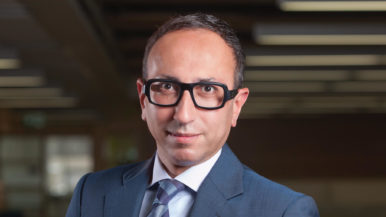Can any mayoral candidate really tame the police budget?
THE IDEA
In early August, before he called it quits on his doomed, largely self-funded bid for the mayoralty, David Soknacki awed more than a few Torontonians—including us—when he promised to cut waste in the city’s annual $1-billion police budget. If elected, he said, he would lead a process to reduce that amount by about $65 million, and all without affecting the number of officers on Toronto’s streets. The savings would then be reinvested in transit, infrastructure and other services. “If we can fix the police budget, we can fix Toronto’s budget,” he said at a press conference. “And if we can fix Toronto’s budget, we can afford to build the city we want.” Even with Soknacki out of the race, this remains one of the year’s more compelling policy proposals, because police funding is overdue for some kind of review. (It consumes more property tax dollars than any other city service.) For the moment, though, the idea seems to have fallen out of favour. None of the other candidates have shown much willingness to take on the Toronto Police Association, whose members are a force to be reckoned with during municipal campaigns.
 WOULD IT WORK?
WOULD IT WORK?
At the very least, the timing would be good. With the end of the current electoral cycle, the terms of four Toronto Police Services Board members—including councillors Mike Del Grande, Michael Thompson and Frances Nunziata—will end. Whoever is elected mayor will be entitled to one of those spots. (Rob Ford opted to appoint Del Grande in his stead.) Around the same time, the board will be negotiating a new contract with the Toronto Police Association, giving the mayor an opportunity to propose and potentially implement cost-cutting changes.
Soknacki’s main idea was to target the Toronto Police Service’s shift structure. The current system divides the day into three shifts: two 10-hour shifts and one eight-hour shift. The city, therefore, pays for 28 hours of policing in a 24-hour day. By switching to three eight-hour shifts per day and eliminating the four hours of overlap, Soknacki claimed, the city could save at least $25 million, a figure supported by an Ernst & Young efficiency report commissioned by the city in 2011.
If the Toronto Police Association’s initial reaction to the idea is any indication, though, negotiating that change could be tough. Toronto Police Association President Mike McCormack told the Star he was “baffled” by Soknacki’s “simplistic” plan and that the overlaps in the current shift structure correlate with the times of day that officers are most needed.
But John Sewell, former mayor and head of the Toronto Police Accountability Coalition, is still optimistic. “If you change the shift schedule, you’re going to have to negotiate with the Toronto Police Association to try to work out some new arrangement,” he said. “That might be difficult, but I don’t think it’s impossible…You have to start a discussion.”
By Sewell’s calculations, Soknacki’s $65-million figure is realistic, if not conservative. Apart from shift-structure savings, the Ernst & Young report says another $17 million could be cut from the budget by transferring some police duties to civilians, reducing the number of supervisors on the force, and focusing on proactive policing. Sewell’s organization has proposed still more changes, like assigning one officer to a car instead of two and rethinking patrol strategies.
Saving $65 million, then, is possible. The challenge would be bartering with the Toronto Police Association to make the necessary changes—a task that would require a skilled negotiator. We’ll never know if Soknacki—clearly a scrappy guy, though evidently not a sufficiently popular one—would have been up to the job.
How do other 2014 mayoral candidates’ ideas measure up? Click here to find out.






the honest truth, is the unions need to be brought to heel…you can’t have the police services serving their members interests as a top priority, and then serving the interests of Toronto’s tax payers next…and hope to have a happy conclusion; privatize the police services…see what happens…do not be afraid to experiment with cost saving initiatives…being stuck in dogmatic reasoning is why Toronto cannot move forward with any positive effect; merely budget shortfalls, year after year.